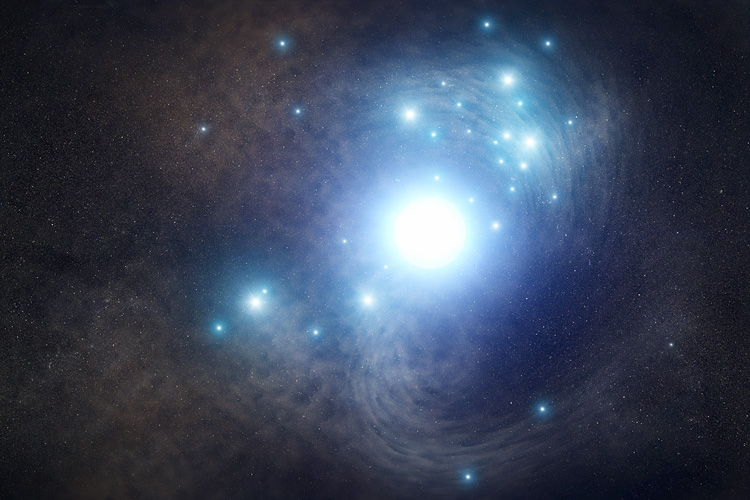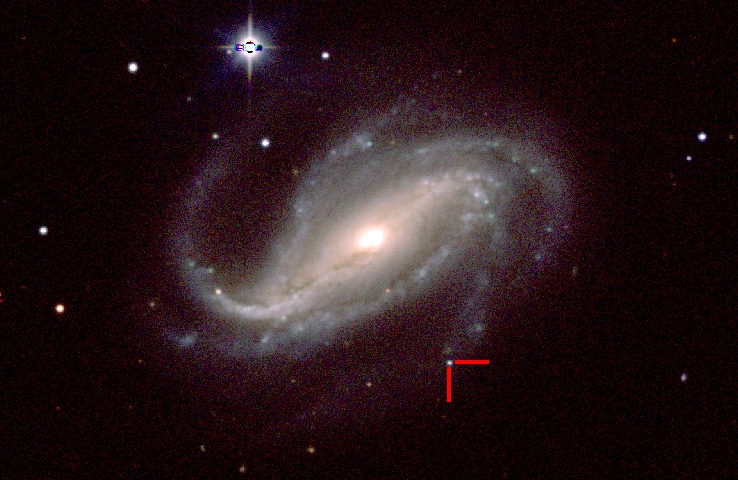-
UC Berkeley researchers discover farthest star ever observed, 9 billion light years away
March 25, 2019
The most distant star ever observed — at a distance of about nine billion light years — was captured using the Hubble Space Telescope by a group of researchers, including members of the UC Berkeley department of astronomy. The star, named MACS J1149 Lensed Star 1, or LS1, was observed in April 2016 when researchers were examining images of a distant supernova, according to campus astronomy professor Alex Filippenko.
Tags:More -
Tracking down a star that disappeared 65 million years ago
November 21, 2018
Astronomers may finally have tracked down the type of star that explodes with a distinctive but unusual signature: They show no evidence of hydrogen and helium, by far the most abundant elements in the universe. Such explosions have been labeled Type Ic supernovae, and make up some 20 percent of all stars that explode when their cores collapse. Most, however, have been observed at such large distances that astronomers could not pinpoint what was there before the explosion blew it to smithereens. But a team that included UC Berkeley astronomer Alex Filippenko got lucky.
Tags:More -
Amateur astronomer captures rare first light from massive exploding star
February 21, 2018
Thanks to lucky snapshots taken by an amateur astronomer in Argentina, scientists have obtained their first view of the initial burst of light from the explosion of a massive star. During tests of a new camera, Víctor Buso captured images of a distant galaxy before and after the supernova’s “shock breakout” – when a supersonic pressure wave from the exploding core of the star hits and heats gas at the star’s surface to a very high temperature, causing it to emit light and rapidly brighten.
Tags:More -
How to Safely View the Eclipse: Tips from Professor Alex Filippenko
August 8, 2017
Anyone planning to observe the eclipse should obtain a pair of certified eclipse glasses (see American Astronomical Society recommendations). While the glasses should be removed during the couple of minutes of totality, they must be worn when looking at the eclipse leading up to and following totality, or when viewing the partial eclipse from outside the zone of totality. The total solar eclipse – the first visible from the continental U.S. since 1979 – will traverse the entire country in a band about 70 miles wide, beginning the morning of Monday, Aug. 21, on the Oregon coast and ending 90 minutes later, in mid-afternoon, off the coast of South Carolina. Many millions of people along the path of totality are expected to watch as the moon eclipses the sun, while even more outside the path of totality will see a partial solar eclipse.
More -
Recent Faculty Discoveries Include Learning What’s Under Jupiter’s Clouds and the Most Precise Measurement of Universal Expansion to Date
June 6, 2016
Professors Imke de Pater and Alex Filippenko have each released information pertaining to findings regarding their respective research last Friday.
More -
CalDay 2015!
March 23, 2015
CalDay 2015 is almost here! On April 18th the campus opens up to the public for hands-on activities, lectures, presentations, tours, food, and other opportunities to engage with the campus community. The Astronomy department is hosting a number of events; see below for a complete listing so you can plan out your day! Are We Alone?: SETI@home & the Search for ET Hear about Berkeley's SETI (Search for Extraterrestrial Intelligence) program at the world's largest telescopes. Volunteers have a small-but-captivating chance that their computer will detect the first signal from a civilization beyond earth. 11:00-12:00, 3 Leconte - Dan Werthimer “Pluto, Ceres, and Below: What…
Tags:More -
Distant Supernova Split Four Ways by Gravitational Lens
March 6, 2015
From release by Robert Sanders: "Over the past several decades, astronomers have come to realize that the sky is filled with magnifying glasses that allow the study of very distant and faint objects barely visible with even the largest telescopes. A University of California, Berkeley, astronomer has now found that one of these lenses – a massive galaxy within a cluster of galaxies that are gravitationally bending and magnifying light – has created four separate images of a distant supernova. The so-called “Einstein cross” will allow a unique study of a distant supernova and the distribution of dark matter in…
Tags:More -
Closest, brightest supernova in decades is also a little weird
February 27, 2014
A supernova discovered by Alex Filippenko and his research team is causing scientists to ask new questions about exploding stars and how we currently understand the expanding universe. Full article found here.
More -
Alex Filippenko Flies with the Blue Angels!
October 12, 2012
Faculty member Alex Filippenko took to the skies with the Blue Angels during this years fleet week; in a jet piloted by Navy Lt. Mark Tedrow, Filippenko took the opportunity to film lessons on gravity and force during his flight to enhance his popular Astronomy C10 course. You can find the full article here.
Tags:More -
UC Berkeley Physics Professor and Former Berkeley Astronomy Miller Fellow Win Nobel Prize in Physics
October 4, 2011
"Saul Perlmutter, who led one of two teams that simultaneously discovered the accelerating expansion of the universe, has been awarded the 2011 Nobel Prize in Physics, to be shared with two members of the rival team. Perlmutter, 52, a professor of physics at the University of California, Berkeley, and a faculty senior scientist at Lawrence Berkeley National Laboratory (LBNL), led the Supernova Cosmology Project that, in 1998, discovered that galaxies are receding from one another faster now than they were billions of years ago. He will share the prize with Adam G. Riess, 41, of The Johns Hopkins University and…
More








